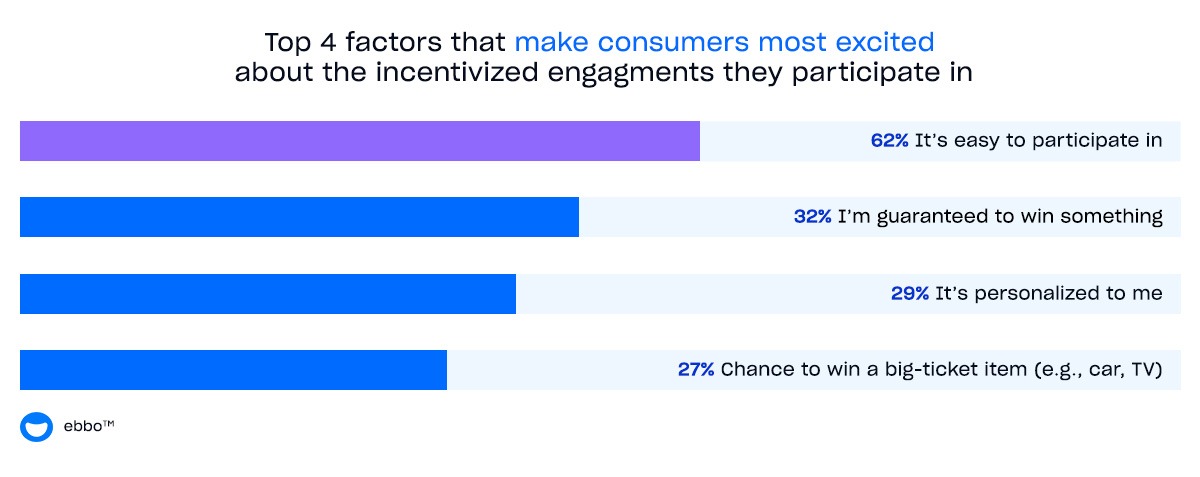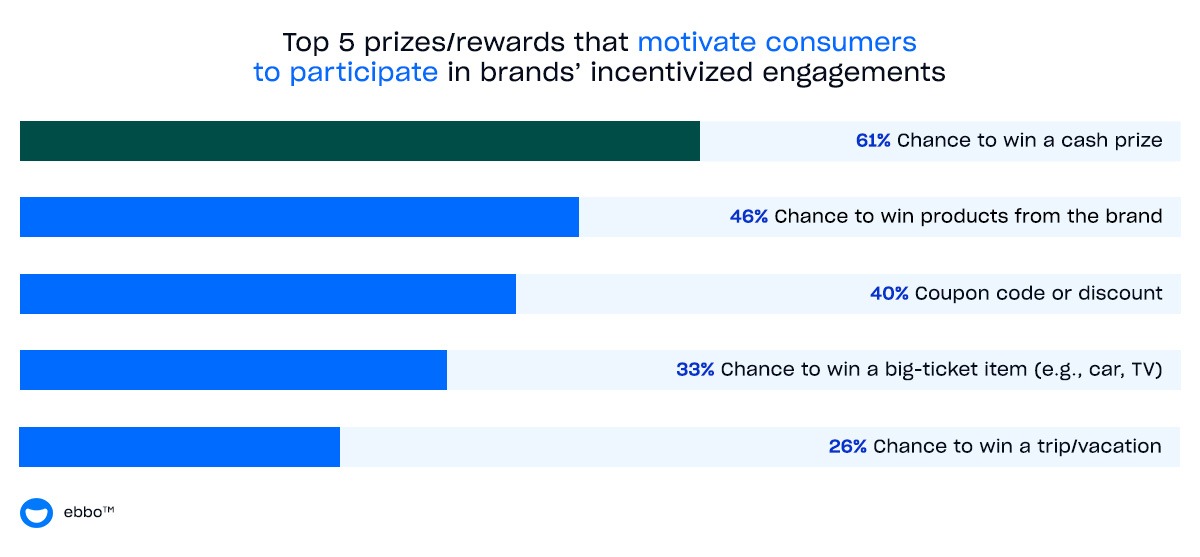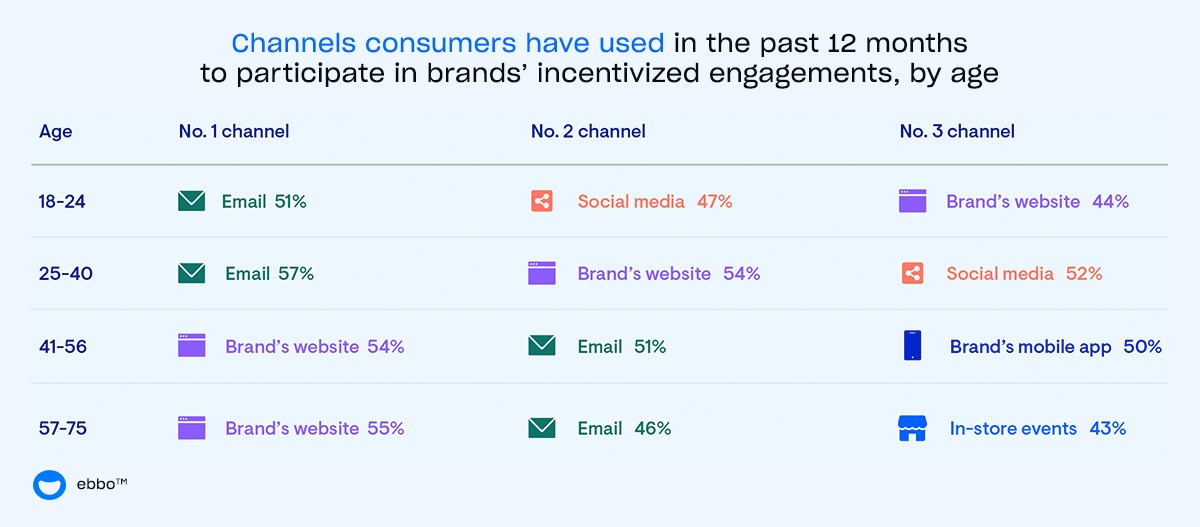Consumers are often excited about signing up for loyalty programs, but it can be challenging to keep them engaged once they become members.
Thus, the need to offer incentives to keep them engaged.
In fact, 90% of consumers agree they are more likely to engage with a brand if it offers incentivized engagements. But what makes some incentives more appealing than others?
This section from our 2023 Customer Engagement Data Study: How Incentives Motivate Consumer Behavior will show you what makes an incentive engaging to your customers.
What Makes Consumers the Most Excited to Participate in Incentives?
To understand customer engagement as it relates to incentivized engagements, also called loyalty amplifiers, brands must analyze why consumers are willing to engage with their loyalty programs.
From instant win games to sweepstakes, UGC contests, social media incentives, trivia and gift with purchase, loyalty amplifiers strategically incentivize and impact consumers by engaging them along their customer journeys. Loyalty amplifiers drive interaction with repeat customers and help increase your sales.

Convenience and guaranteed wins mean more to consumers than emotional motivators, according to the study.
By far, the No. 1 factor that motivates consumer engagement with incentives is the ease of participation (62%). You can have the most perfectly designed incentive, but if it isn’t easy for consumers to participate, it will not be successful.
The next biggest factor that makes consumers excited to participate in an incentivized engagement is feeling like they’re guaranteed to win something (32%).
Given numerous consumer options in a crowded marketplace, brands must realize that shoppers are more particular than ever before.
While ease of participation is easily the most motivating factor for a consumer to participate in an incentivized engagement, 29% said personalization is also critical and 27% said the chance to win a big-ticket item like a car or television.
What Prizes Motivates Consumers to Participate in Incentives?
While cash is the No. 1 motivator for consumers to participate in a brand’s incentivized engagement (61%), product giveaways (46%) and discounts (40%) are close behind in second and third, respectively.
Brands should consider these stats when creating incentivized engagements because consumers want product giveaways and discounts. While consumers want cash, product giveaways and discounts are also important.

Cash will always be the greatest motivator, according to the study, but it does not impact differentiation in the marketplace or speak to any brand values. Cash rewards are appealing, but do not help tell your brand story and create loyal customers.
Offering brand currency within your mobile app is a great way to strengthen connections with your loyalty program members.
If you offer incentives like product giveaways and discounts, these are likely to increase repeat engagement among your loyalty program members.
What Channels do Consumers Use to Participate in Incentives?
If you understand why and where consumers will engage with your incentives, then you can create personalized experiences based on member demographics.
So, where do consumers prefer to see incentivized engagements offered?

According to the study, consumers who have participated in a brand’s incentivized engagement in the past 12 months prefer the following channels:
- A brand’s website (52%)
- Email (51%)
- A brand’s mobile app (41%)
A key point the study shows is that digital engagement opportunities are more successful for brands than in-person events.
And the study reveals that channel preferences vary by demographics such as age. For example, younger consumers are more willing to engage with brands via social media while older consumers are more likely to engage via a brand’s website.
Make Sure Your Incentives Are Engaging
Offering incentivized engagements through your loyalty program is an excellent strategy to retain members for the long run.
Remember to make them easy for consumers to participate in and offer product giveaways and discounts to align with your customers’ preferences.
And target your loyalty program members based on their channel preferences, which vary by age.